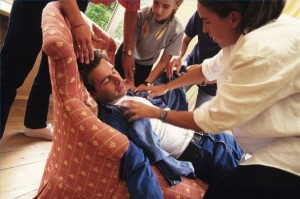
Kirsten was in her junior year in college when for her comparative anatomy class, they had to dissect cats. The foul smelling cat had been dead for a few weeks but what irritated her and her classmates the most was the pungent smell of formalin of which the room was oozing with. Despite a number of small fans and a side of big windows in the classroom, ventilation was still not enough for the almost twenty formalin-sprayed cats. It hurt the students’ eyes and irritated their noses. But Kirsten, who had been wearing her laboratory gown for a few hours, had a history of fainting spells and this class was no exception. In the middle of removing the cats’ muscles, Kirsten suddenly fell but was caught by her lab partner. Her classmates rushed to her with worried looks on their faces. She was pale and sweating. They carried her outside for more air but debated what to do with her in her situation.
What Kirsten’s classmates should have done first was to check for any dangers. Once it was assured no dangers are present they should check her level of consciousness. After checking if she was breathing, which in this circumstance she was Kirsten should have been placed into the recovery position. Her laboratory gown should have been removed and any other constrictive clothing. Kirsten’s classmates should have tried to revive her by briskly tapping her or even yelling at her (Web MB ND). Thankfully, though, she did wake up soon enough and was permitted to rest for the remainder of the time. However, Kirsten insisted on going back inside to finish dissecting the cat. Nonetheless she was strongly discouraged by her classmates from standing up too soon, in fear of her falling into another fainting spell. Fortunately, after assessing her for some time, she did not obtain any additional injuries.
Things would have been different if Kirsten did not gain consciousness within the first few minutes. Had she not gained consciousness, she should have been brought to the school’s infirmary. Moreover, if there was absence of circulation, CPR should have been commenced and continued until the person responds, EMS arrives, an AED arrives, or the victim starts breathing again (Web MB ND).
How to Help Someone Who Has Fainted | First Aid
[media url=”http://www.youtube.com/watch?v=LIiuqzvX4vs” width=”600″ height=”400″]If one feels faint, he/ she must lie down or sit down to decrease risks of fainting. If one chooses the former, find a position where one, if possible, can place his/ her head low while elevating the legs. If the person chooses the latter, the head must be placed in between the knees. The same must be done if one suspects another about to faint. Read about first aid faqs to learn more on what to do in this kind of situations.
Fainting is characterized by a momentary loss of consciousness as a result to abrupt drop in blood pressure. There are many causes of fainting such as prolonged standing, extreme heat, emotional distress and anxiety, among others (Better Health Channel ND). Although fainting is never usually fatal, it is important to have first aid training to know the proper treatment for a quick recovery.
Better Health Channel [Internet]. ND. Fainting. Victoria (AU): State Government of Victoria; [cited 2013 Jun 06]. Available from: http://www.betterhealth.vic.gov.au/bhcv2/bhcarticles.nsf/pages/Fainting
Web MD [Internet]. ND. Fainting treatment. New York (US): WebMD.com; [cited 2013 Jun 06]. Available from: http://www.webmd.com/about-webmd-policies/default.htm?ss=ftr
